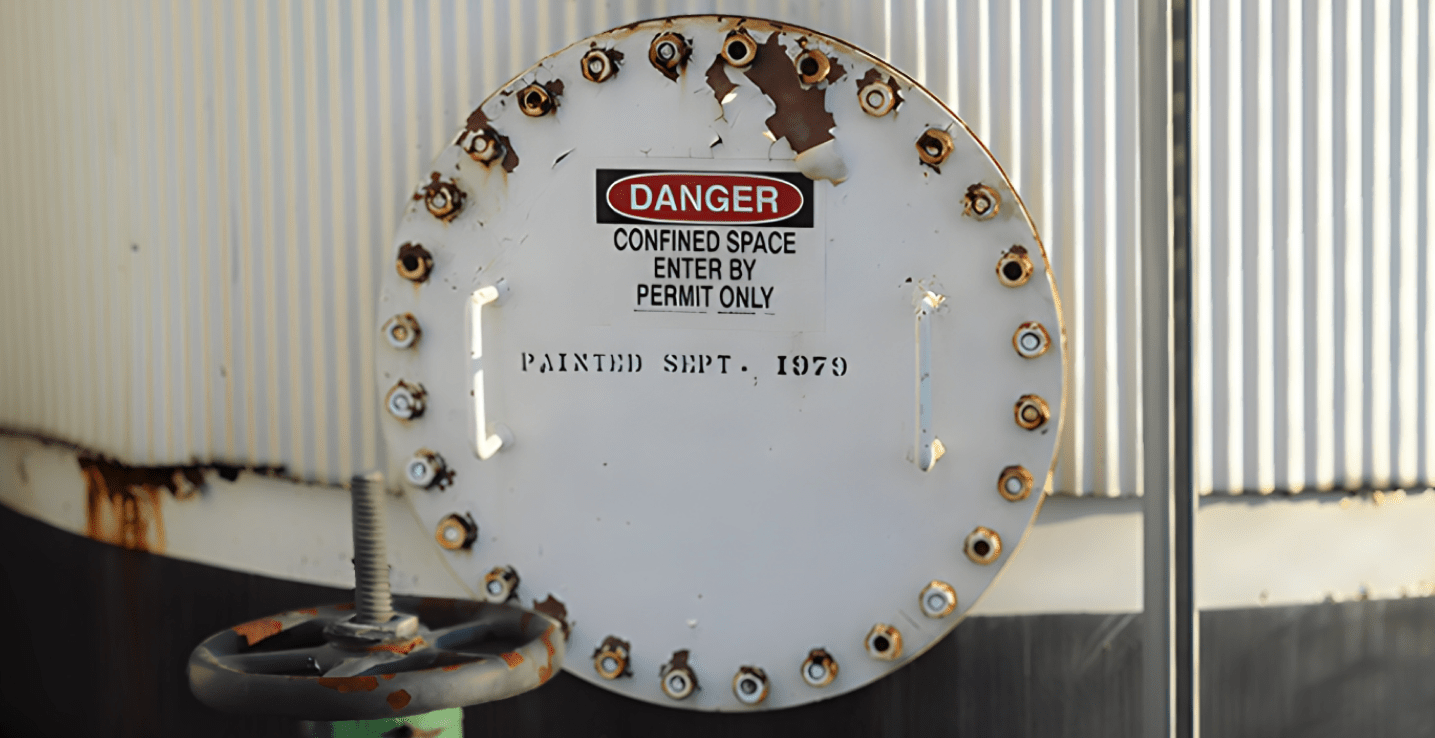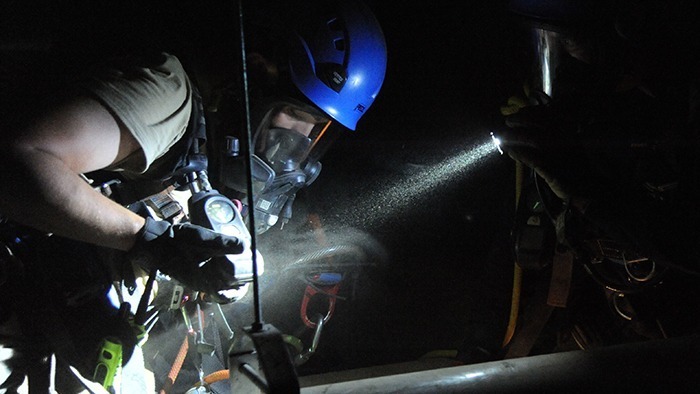
Confined spaces present unique and serious hazards across many workplaces – whether federally or provincially regulated. Understanding the regulatory framework is critical for employers and workers alike, particularly when entering environments that are not designed for continuous human occupancy and may pose significant risks.
This article provides a comparative overview of federal and Ontario confined space regulations, including definitions, course requirements, and training standards.
Overview of Confined Space Regulation Amendments
Canada Gazette, Part I, Volume 154, Number 25 (June 2020), introduced amendments to the Canada Occupational Health and Safety Regulations (Part XI) regarding confined spaces. This raised comparisons between federal regulations and Ontario’s provincial regulations, particularly O. Reg 632/05 (Confined Spaces).
Definition of a Confined Space: Federal vs. Provincial
Federal (SOR/86-304):
A confined space is defined as an enclosed or partially enclosed space that:
- Is not designed or intended for human occupancy except for the purpose of performing work,
- Has restricted means of access and egress, and
- May become hazardous to any person entering it.
Ontario (O. Reg 632/05):
A confined space is defined as a fully or partially enclosed space:
- That is not both designed and constructed for continuous human occupancy, and
- In which atmospheric hazards may occur.
Despite variations in language, both definitions share core elements:
- Not designed for human occupancy
- Limited access
- Potential for hazardous conditions
These criteria form the basis for required safety protocols.
Written Course Requirements Before Entry (Ontario)
Under O. Reg 632 S. 5 (1), employers must establish a written confined space course prior to entry. Requirements include:
- Identification of all applicable confined spaces
- Hazard assessment (including atmospheric, structural, and procedural risks)
- Development of safety plans (entry, isolation, rescue)
- Worker training on hazards and procedures
- Permit system for entry
Per S. 5 (3), the joint health and safety committee (JHSC) must be consulted during course development.
Federal Requirements (SOR/86-304)
Key distinctions under federal regulation:
- Hazard assessments are valid for three years (S. 11.2(4))
- Entry procedures must be developed in consultation with the workplace safety committee (S. 11.3)
- Procedures must include permits, personnel responsibilities, equipment usage, and rescue protocols
- Atmospheric testing must confirm oxygen levels between 18% and 23% (S. 11.4(1)(a)(iii)), compared to 19.5% to 23% under Ontario’s regulation
Notable differences include:
- Duration of hazard assessment validity (federal: 3 years; Ontario: situational)
- Acceptable oxygen concentration range (federal: lower threshold of 18%)
- Mandatory consultation in procedural development
Critical Roles in Confined Space Programs

Confined space safety courses typically designate four roles:
- Entrant: Worker entering the space
- Attendant: Observer positioned outside the space
- Rescuer: Trained responder for emergencies
- Employer/Designate: Responsible for planning, oversight, and regulatory compliance
Training: Awareness vs. Rescue
Entrants and Attendants require awareness-level training, including:
- Hazard identification and control measures
- Entry permit comprehension
- Defined roles and responsibilities
- Communication and emergency protocols
Rescuers require advanced training under O. Reg 632 S. 5 (11), including:
- Site-specific rescue techniques
- First aid and CPR
- Use of specialized rescue equipment (e.g., SCBA, tripods, gas detectors)
Rescue personnel must demonstrate practical readiness, including equipment checks and procedural familiarity.
Employer Responsibilities
Under the Occupational Health and Safety Act (OHSA), S. 25 (2)(a)(d), employers are required to:
- Provide workers with information, instruction, and supervision necessary to ensure health and safety
- Maintain comprehensive confined space procedures and training
Employers must be able to demonstrate that all reasonable precautions have been taken to protect workers.
Summary
Federal and provincial confined space regulations exhibit minor technical differences but maintain the same objective: to ensure worker safety. Courses must be site-specific, comprehensive, and consistently reviewed and maintained. A robust confined space program, supported by proper training and oversight, is essential for preventing incidents in hazardous environments.